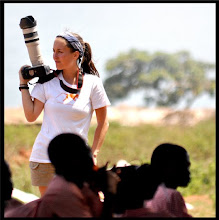Why is it that Inshuti, year after year, chooses not to lead his group to the prolific bamboo shoots along the border? Though it’s only speculation at this point, perhaps it is because he is the only male in his group and thus has no “backup” in the event of an interaction with another group. This leaves him more vulnerable to lone silverbacks and other males looking to steal his females. Heading down to the bamboo zone during the shoot season, the gorilla groups are forced into close proximity with one another and it is a time when inter-group interactions are on the rise and anything can happen. In previous years, no outstanding event precipitated Inshuti’s retreat up to the higher elevations. This year, however, his decision to move up the slopes of Mount Karisimbi - an area where the research groups normally do not range - can be easily explained. The silverback has kept his group up on Mount Karisimbi ever since all the turmoil and drama that led to the loss of two of his females in January and February 2012. Inshuti was an injured, weakened silverback with no beta male. Considering all of the aggressions that he had endured in the previous months, it is not hard to understand his motive: move higher up in order to avoid lone silverbacks prowling for females and safely keep what is left of his former six-member group. Karisoke researcher Winnie Eckardt, PhD, trekked to Inshuti’s group on Thursday, April 26th, aware that they were ranging at least four hours from the park border. With three Inshuti trackers, Phocas Nkunzingoma, Simon Havugimana and Gustave Busheja, the team climbed up Mount Karisimbi’s slopes to almost 3,800 meters (12,467 ft.). Spanning the border of Rwanda and the Democratic Republic of Congo, Mount Karisimbi is the highest volcano in the Virunga range at 4,507 meters (14,783 feet) and the fifth highest mountain in Africa. The subalpine and alpine zones are teeming with Rubus (blackberries) and Dendrosenecio. Along the trek up, the team passed what Dian Fossey described as many “barren, moon-like alpine meadows of Karisimbi” and continued to climb higher in elevation. The field team found the group’s night nests at 3,680 meters, but continued upwards to find the four gorillas that remain in Inshuti’s group. The team moved quickly from the start, knowing that Inshuti's group was ranging far, confident in their many hours of experience on the mountains. But the quick ascent backfired, and Eckardt reported that altitude sickness had set in by the time the team reached the nest site. An unsettling nausea gripped the hardened gorilla researcher and her legs felt as if they had turned to stone. It’s extremely cold, windy, misty and wet at this altitude and the gorillas too struggle in such difficult conditions. The field team reported that infant Akaruso, after losing his mother when she transferred to Giraneza’s group in February, continues to sleep with Inshuti. The silverback had built a deep, thick nest to deflect the cold wind. Another equally deep nest where Shangaza and infant Ngwino had slept was nearby. In her book Gorillas In The Mist, Fossey described other gorillas retreating to Karisimbi’s slopes during her research. Lone silverbacks Bartok and Brahms both chose ranges on Karisimbi. And, when Brahms was shot in the chest by a poacher’s bow and arrow in 1971, he retreated up Karisimbi and stayed for an entire year before he successfully obtained two females and formed his own group. Jessica Burbridge, Field Communications Officer
All Images © Dian Fossey Gorilla Fund International
To read more of the Fossey Fund's blog, please click here. | ||||

